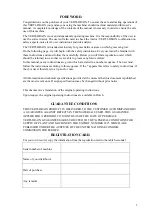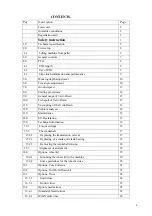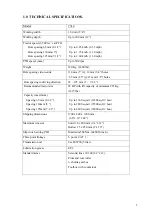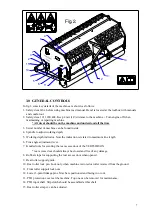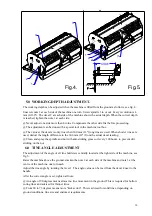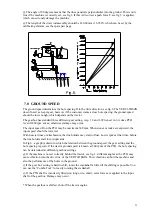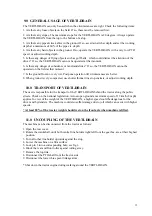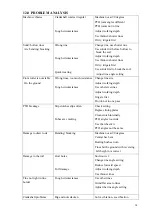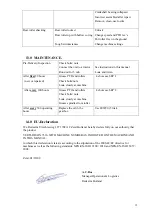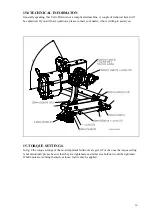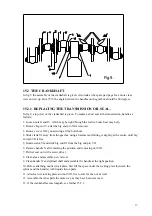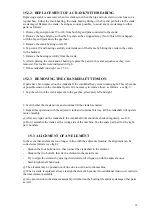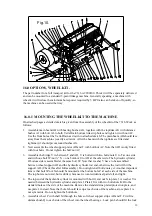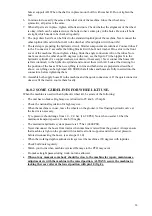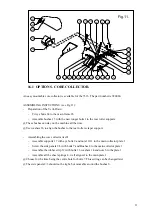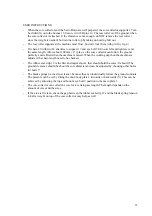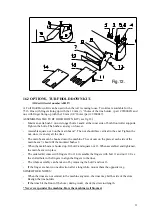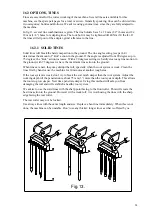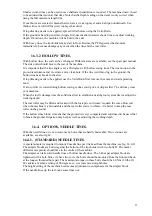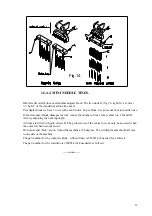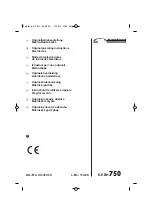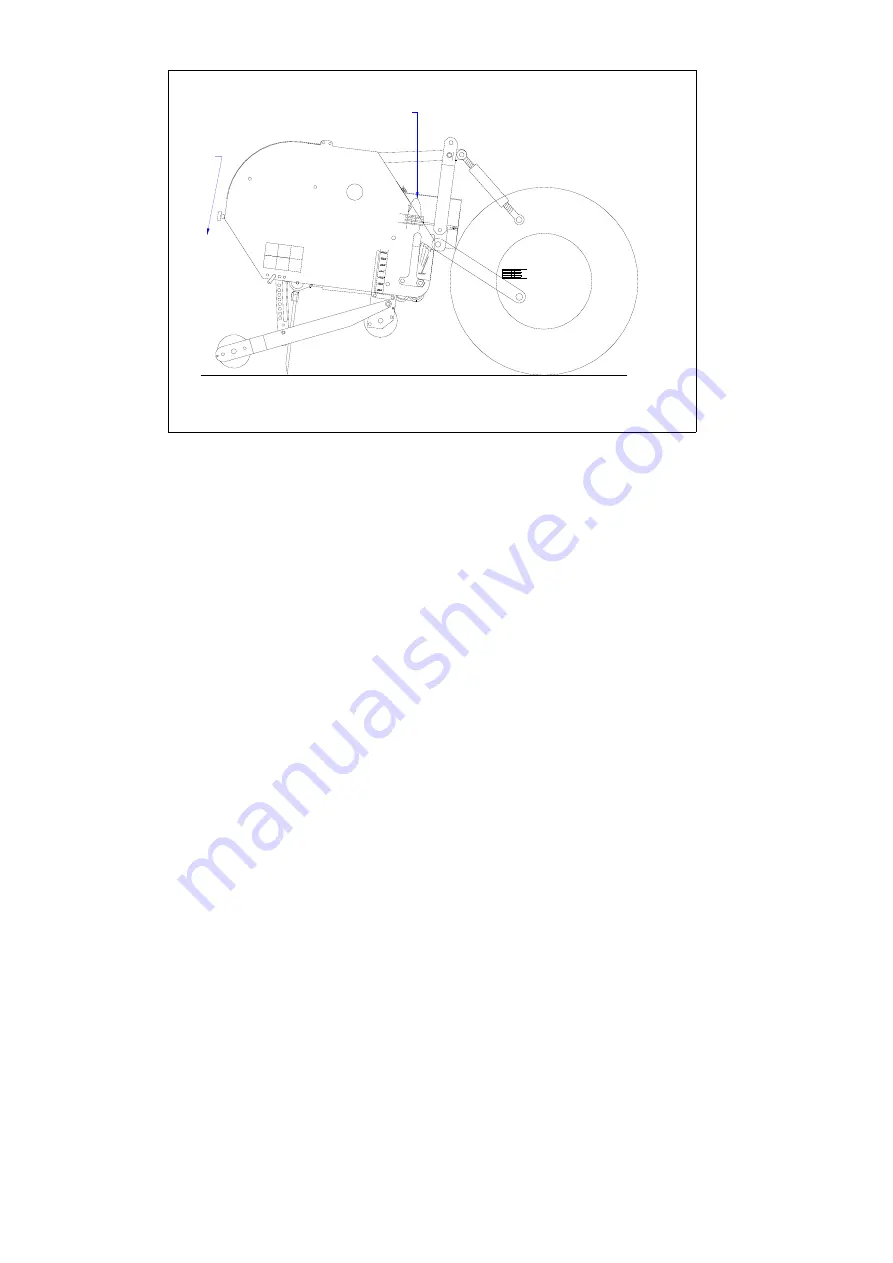
12
8.0 STARTING PROCEDURES
.
The starting procedure is
VERY
important. If the start up is not done as described hereunder,
serious damage to the machine may occur. Proceed as follows, see fig.7.:
1. Drive to the spot you want to start the operation.
2. Lower the machine, till the lowest tines are almost on the ground.
3. Set tractor engine at approx. 1200 rpm's
4. Put tractor in correct gear, and start moving forward (A)
5. Engage PTO at tractor (B)
6. DURING rolling forwards with the machine RUNNING, GENTLY lower the machine in the
ground (C), till front roller is tight on the ground.
7. Increase engine rpm's till the maximum value permitted.
At the end of a pass, quit the operation as follows:
1. Lower engine rpm's till about 1200.
2. Raise machine out of the ground.
3. As soon as all tines are out of the ground, disengage PTO.
4. Raise machine further, till the lowest tines are at least 120 mm (5") above the ground.
5. Move to the next spot and start again as described above.
@ It is absolutely necessary to proceed as described above. If the machine is put into the ground
first, without the PTO running, serious damage may occur.
@The machine needs to be lowered GENTLY.
@ Be careful with driving backwards.
During work the front roller needs to be stable on the ground. If the machine starts to be unstable,
change the rpm's on the PTO. If this doesn't make any difference, adjust the working depth or change
to other tines who penetrate easier.
@ If nothing is done on the instability of the machine, serious troubles may arise afterwards. The
machine is NOT protected against these circumstances on the long term.
@ Never drive backwards with the tines in or close to the ground.
@ NEVER drive backwards, when the lowest tines are less than 120 mm (5") above the ground. If
the tines get caught, serious damage will appear on the machine.
@ Do not use a hydraulic top link.
Fig.7.
C
B


